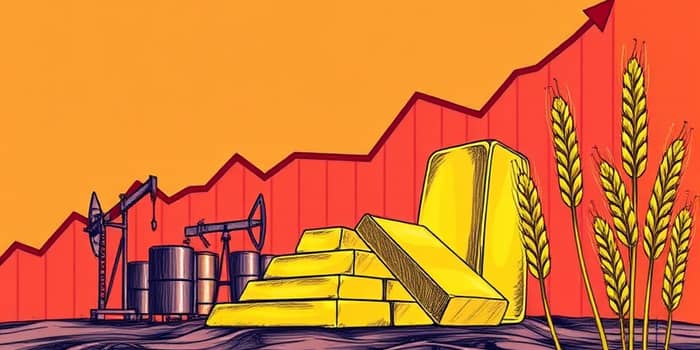
As consumers watch grocery receipts climb and savers worry about eroding purchasing power, a question rises: how can we protect wealth when prices surge? Increasingly, investors and everyday individuals alike are turning to commodities as a bulwark against the invisible tide of inflation.
Inflation, at its core, is a general increase in prices and a steady decline in the purchasing power of money. When households see the cost of essentials soaring, the sting of inflation becomes deeply personal.
Amid this pressure, commodities—ranging from precious metals to energy products—tend to rise in value. Their ability to appreciate during inflationary periods positions them as a natural hedge against inflation for both portfolios and balance sheets.
History reveals that commodities often outperform traditional assets like stocks and bonds when inflation spikes. During the 2021–2022 surge, the Bloomberg Commodity Index posted gains while major equity and fixed-income benchmarks declined.
During the 1970s, known for prolonged inflation and economic stagnation, commodities delivered positive real returns when stocks and bonds were losing value. Similarly, a surprise 1% uptick in U.S. inflation has historically translated into a 7% real return for commodities, underscoring their defensive qualities.
Not all commodities behave identically. Some offer stability and safe-haven appeal, while others reflect industrial and consumer demand dynamics.
While commodities shine during inflationary surges, they also carry risks. Volatility can be high, leading to significant price swings that may unsettle conservative investors.
Acknowledging volatility and risk is crucial. Commodity markets are influenced by weather events, geopolitical tensions, and supply chain disruptions, factors that can trigger sharp drawdowns.
For many, direct exposure to raw commodities is impractical. Instead, financial instruments offer simpler access while spreading risk.
Commodities perform unevenly across the phases of the economic cycle. During expansion, demand for energy and industrial metals surges. At peaks, prices may plateau, while contractions see a pullback in resource-intensive activities.
As economies recover, pent-up demand often boosts prices once more, making commodities a cyclical play. Importantly, diversification tool in portfolios is a phrase that underscores their low correlation with stocks and bonds, smoothing overall returns over time.
In an era of persistent inflationary pressures, commodities have regained the spotlight. Their historical performance during price surges, combined with a low correlation to traditional assets, makes them an indispensable part of a robust investment strategy.
However, with higher volatility and unique risk factors, no single asset class offers a perfect solution. Incorporating commodities demands careful allocation, ongoing monitoring, and an understanding of global supply and demand dynamics.
For investors seeking to shield wealth from rising prices, adding a judicious slice of commodities can offer comprehensive inflation protection. By blending precious metals, energy assets, and agricultural staples with other hedges such as TIPS and real estate, one can build a resilient portfolio ready to weather the storms of inflation.
References













